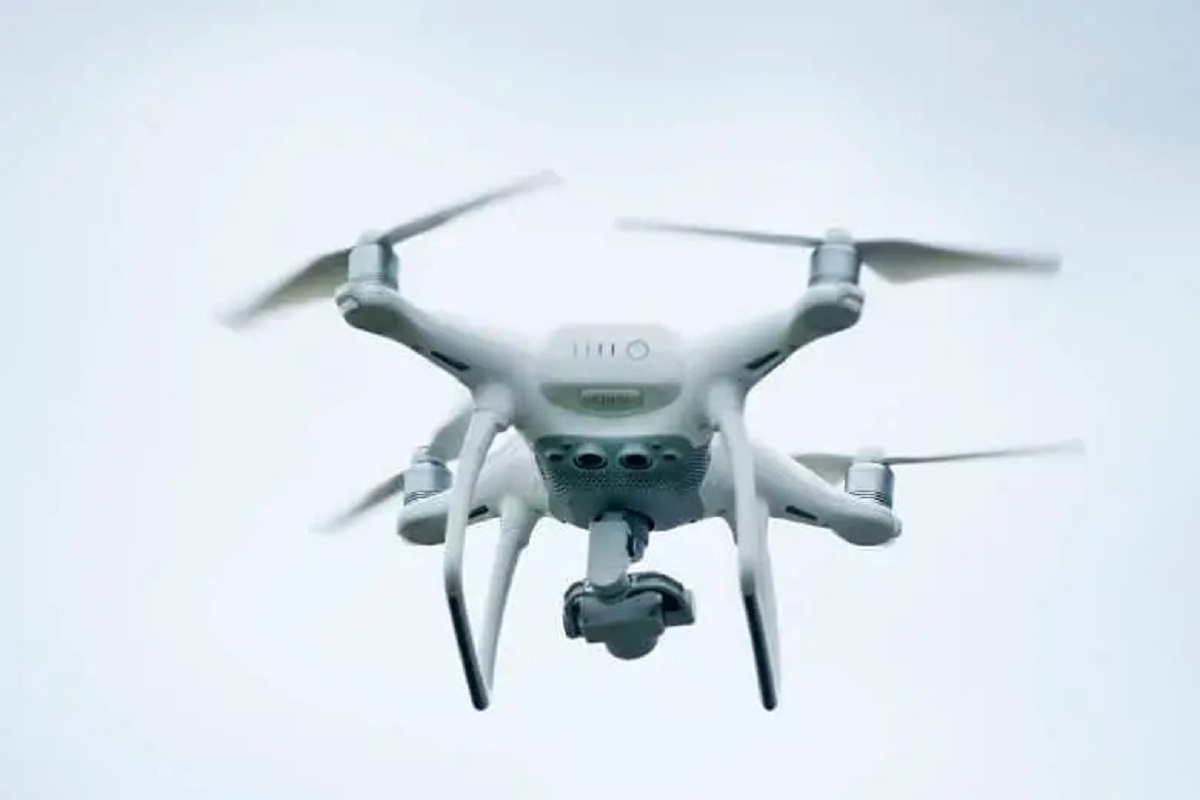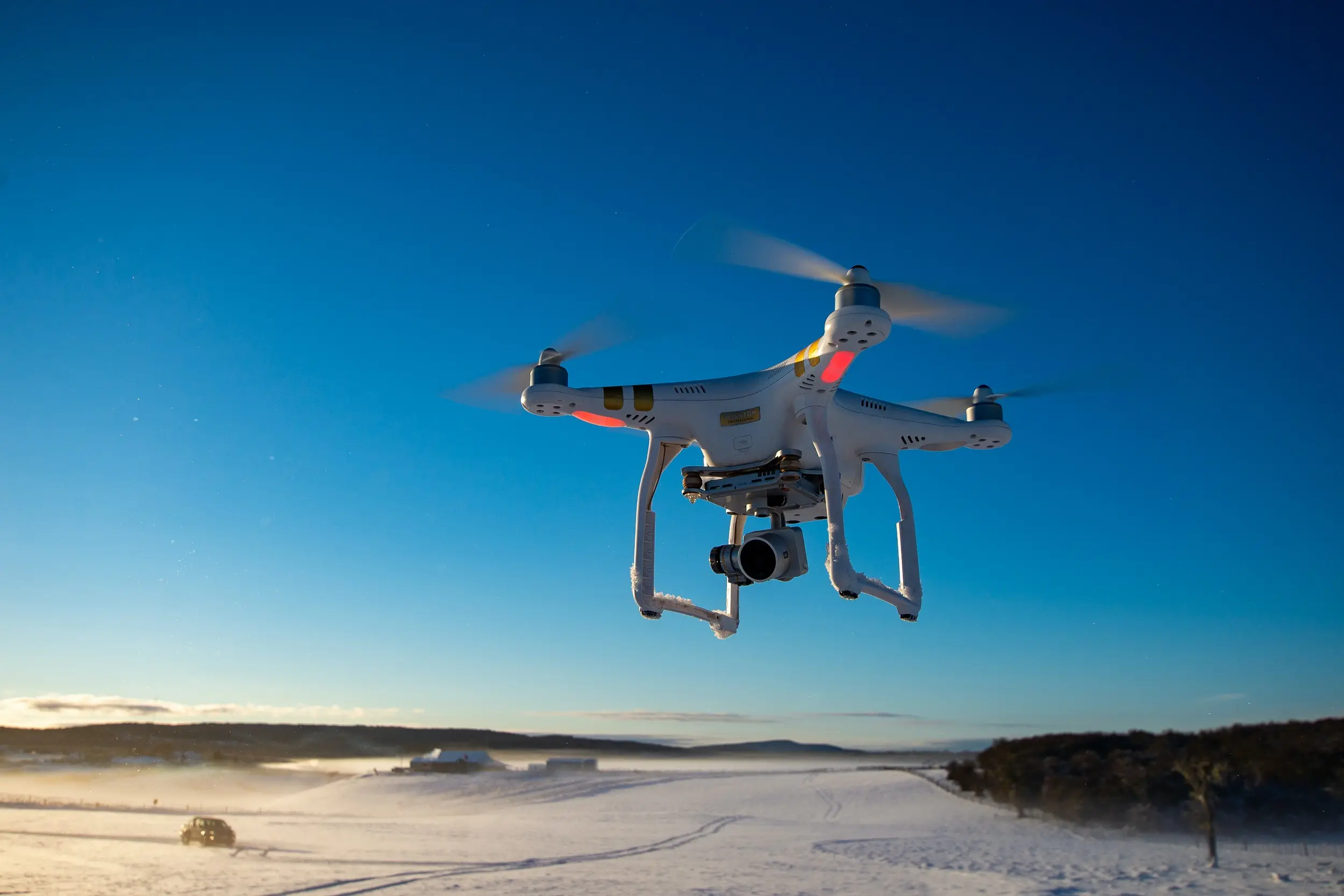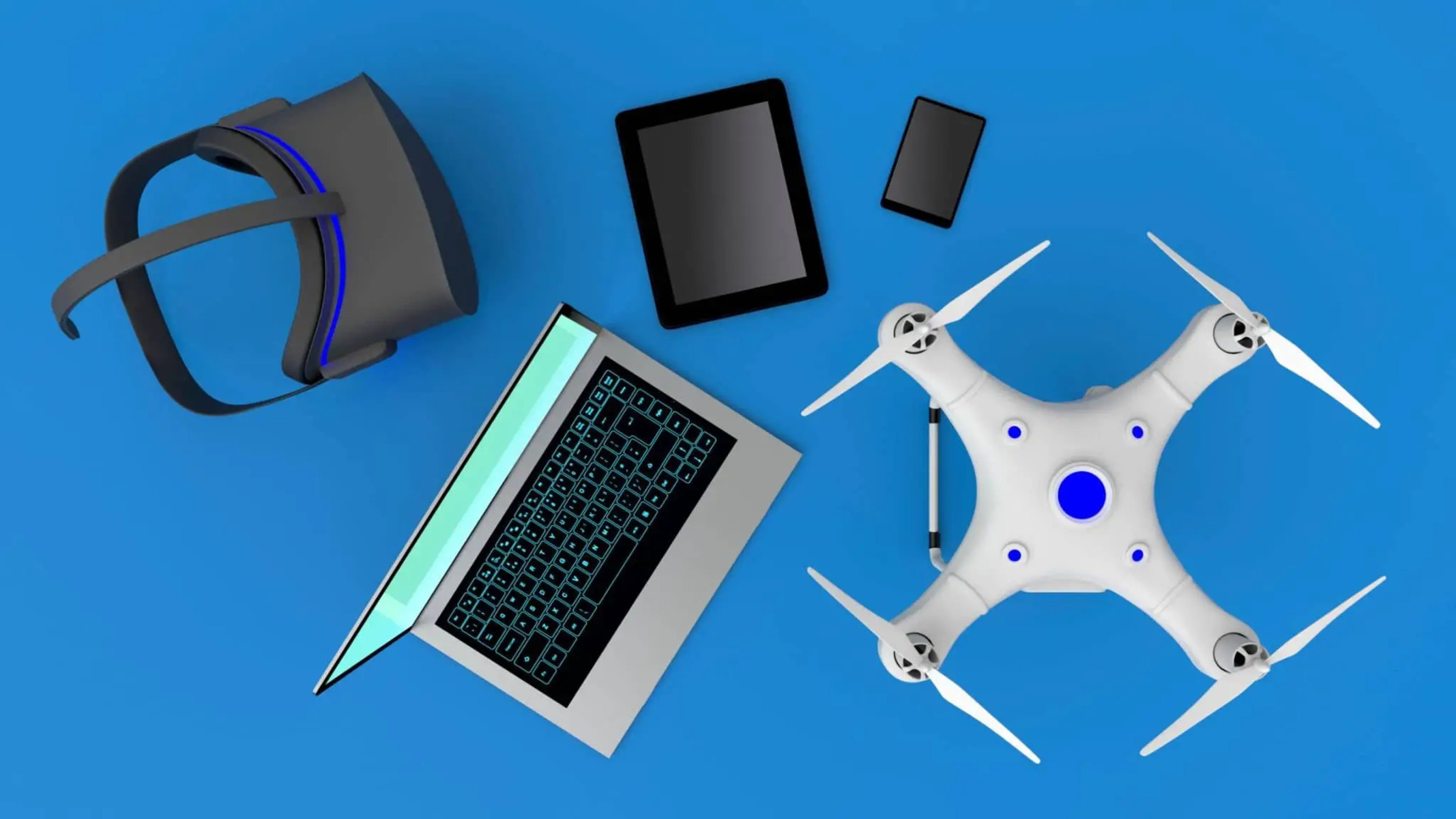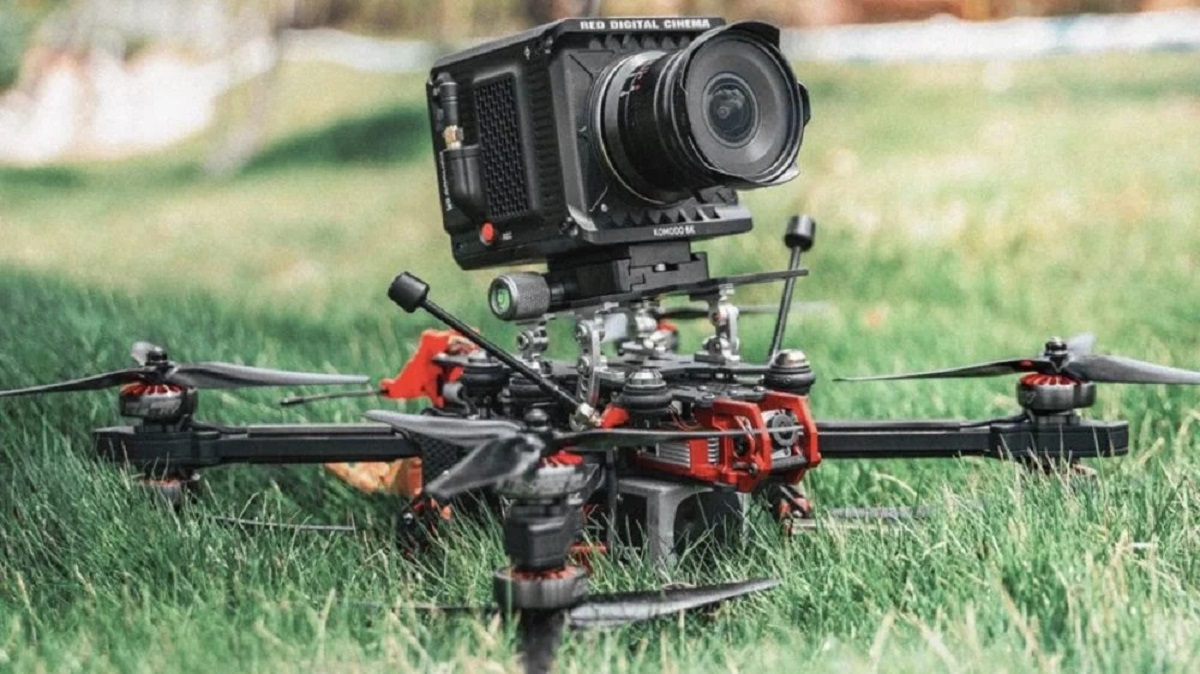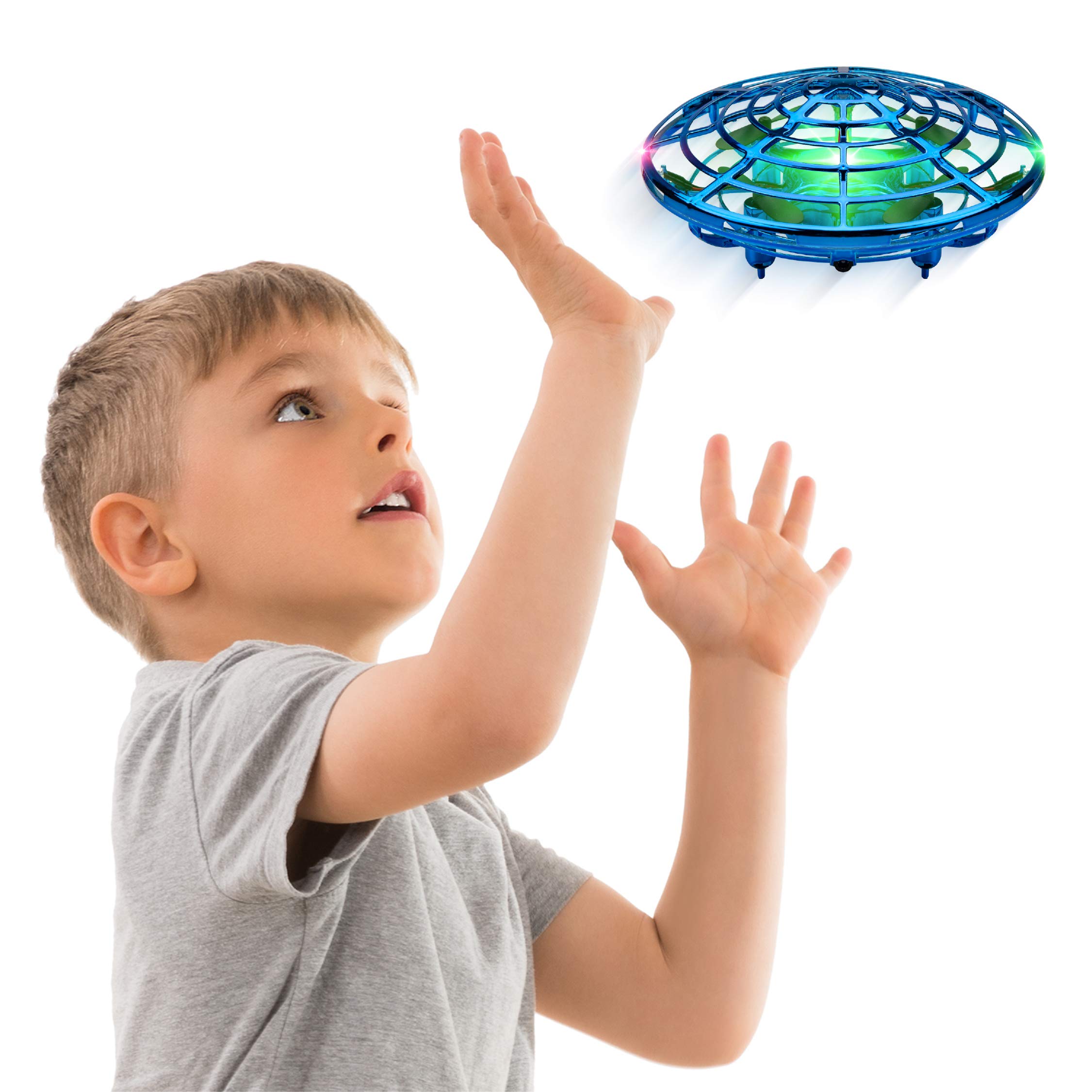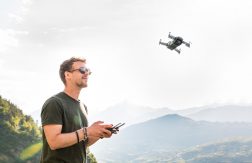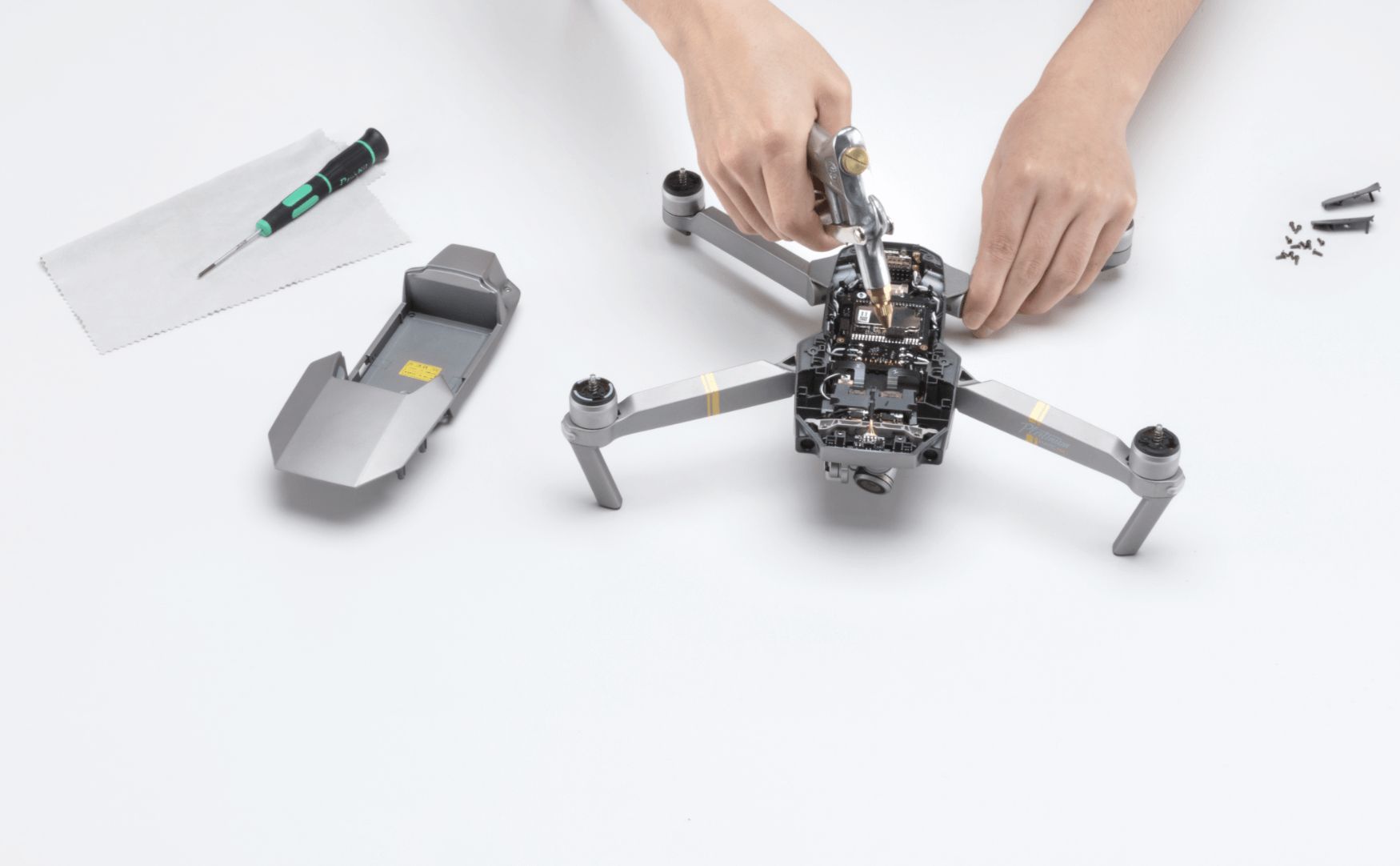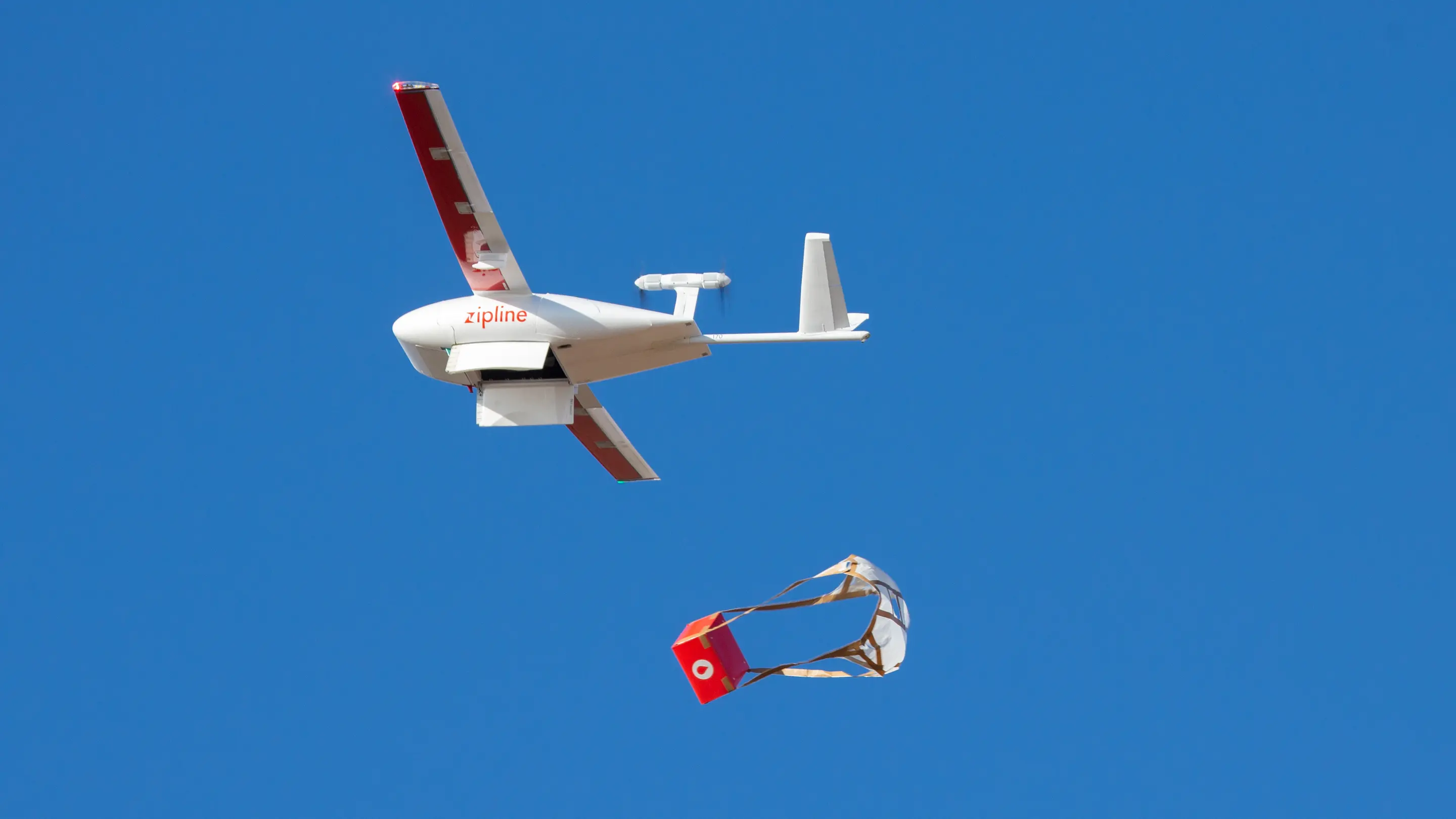Introduction
Drones have become increasingly popular in recent years, captivating both hobbyists and professionals alike. These unmanned aerial vehicles (UAVs) offer a fascinating perspective, allowing us to explore the world from above and capture breathtaking aerial photographs and videos. But have you ever wondered about the inner workings of a drone? How does it fly, navigate, and capture those stunning images?
In this article, we will delve into the world of drones and explore how they work. We will demystify the primary components of a drone, understand how they are powered, and discover the intricacies of navigating and controlling these sophisticated flying machines. Additionally, we will learn about the advanced technologies that keep drones stable in the air while capturing stunning visuals, and explore the safety measures and regulations that govern their usage.
Whether you are a drone enthusiast, a curious individual, or someone considering getting into drone photography or videography, this article will provide valuable insights into the mechanics behind these remarkable devices. So let’s take off and unravel the mystery of how drones work!
What is a Drone?
A drone, also known as an unmanned aerial vehicle (UAV), is an aircraft that can operate without a human pilot on board. Drones come in various shapes and sizes, ranging from small quadcopters to larger fixed-wing aircraft. They are equipped with sensors, cameras, and other specialized equipment that allow them to perform a wide range of tasks, from aerial photography and videography to surveillance, search and rescue operations, and even package delivery.
One of the key features of a drone is its ability to fly autonomously or be remotely controlled by a pilot on the ground. This remote control can be done using a handheld controller or a mobile device, making it convenient and accessible for users of all skill levels.
Drones have revolutionized many industries, including photography, film production, agriculture, construction, and disaster response. The ability to capture stunning aerial shots and access hard-to-reach areas has opened up new possibilities and perspectives for creative professionals and businesses.
While drones were initially developed for military and government use, they have become increasingly popular among consumers in recent years. Now, anyone can own a drone and experience the thrill of piloting their own aircraft.
It’s important to note that drones are not just toys; they are sophisticated pieces of technology. They require responsible and mindful operation to ensure safety and compliance with local regulations. As drones continue to advance and become more integrated into our daily lives, it is crucial to understand their capabilities, limitations, and the responsibilities that come with owning and operating one.
The Primary Components of a Drone
Behind the sleek design and high-tech features of a drone lie several essential components that work together to enable its flight and functionality. Understanding these components is key to comprehending how a drone operates. Let’s explore the primary components of a drone:
- Frame: The frame is the structure that holds all the components of the drone together. It is typically made of lightweight materials such as carbon fiber or plastic, designed to maximize strength while minimizing weight.
- Propellers and Motors: Drones rely on multiple propellers, usually four or more, to generate the necessary thrust for flight. Each propeller is connected to an electric motor that spins it at high speeds. By varying the speed and direction of rotation of the motors, a drone can maneuver and change altitude.
- Flight Controller: The flight controller is essentially the “brain” of a drone. It is a circuit board with built-in sensors such as gyroscopes, accelerometers, and magnetometers. These sensors provide vital data about the drone’s orientation, speed, and position, allowing the flight controller to make real-time adjustments to maintain stability and respond to pilot commands.
- Battery: The battery is the power source for a drone. It provides electricity to the motors, flight controller, and other onboard electronics. Drones typically use lithium-polymer (LiPo) batteries due to their high energy density and lightweight nature.
- Electronic Speed Controllers (ESCs): ESCs are responsible for controlling the speed and direction of the motors. They receive commands from the flight controller and adjust the power supplied to each motor accordingly. By coordinating the rotation speed of the propellers, the flight controller can control the drone’s movement.
- Remote Controller: The remote controller is used to pilot the drone. It communicates wirelessly with the drone’s flight controller, enabling the pilot to maneuver the drone and activate various features such as taking photos or videos. The remote controller is equipped with joysticks, buttons, and switches for precise control and customization.
- Onboard Camera: Many drones come equipped with integrated cameras that allow for aerial photography and videography. These cameras vary in quality and capabilities, ranging from basic models that capture HD video to professional-grade cameras capable of shooting 4K video and capturing high-resolution images.
- GPS System: Some advanced drones are equipped with GPS receivers that provide precise location information. The GPS system enables features such as waypoint navigation, return-to-home functions, and geofencing.
These primary components work in harmony to give a drone the ability to fly, navigate, and perform various tasks. Understanding the role of each component is crucial in operating a drone safely and effectively.
Powering a Drone: Understanding the Battery
A drone’s battery is a vital component that provides the necessary power for its flight. Understanding how drone batteries work is crucial for optimizing flight time, ensuring safe operation, and prolonging the lifespan of the battery itself.
Most drones use lithium-polymer (LiPo) batteries due to their high energy density, lightweight design, and ability to deliver a consistent power output. LiPo batteries are made up of individual cells, with each cell having a nominal voltage of 3.7 volts. The total voltage of the battery depends on the number of cells connected in series.
The capacity of a drone battery is measured in milliampere-hours (mAh) and determines how long the drone can fly before needing a recharge. Higher capacities generally provide longer flight times, but they also increase the weight of the battery, which affects the overall performance of the drone. It is essential to strike a balance between flight time and weight.
Charging and maintaining a drone battery is crucial for its longevity and performance. Most drones come with a dedicated charger that is specifically designed for the battery used. It is important to follow the manufacturer’s guidelines and use only the recommended charger to prevent damaging the battery or causing a fire hazard.
During flight, it is essential to monitor the battery’s voltage to ensure the drone does not run out of power mid-flight. Modern drones are equipped with voltage sensors that can relay the battery’s status to the flight controller or a companion app on a mobile device. Paying attention to battery voltage and landing the drone when it reaches a certain threshold is crucial for the safety of the aircraft and the preservation of the battery.
It is worth noting that extreme temperatures can affect the performance of the battery. Cold temperatures can cause the battery’s voltage to drop, reducing flight time and overall performance. On the other hand, hot temperatures can accelerate the aging process of the battery and even lead to thermal runaway, which is a dangerous condition where the battery overheats and catches fire. Therefore, it is important to store and operate drone batteries within the recommended temperature range specified by the manufacturer.
Overall, understanding the battery and its characteristics is essential for safe and efficient drone operation. Proper battery care, monitoring, and following manufacturer guidelines for storage, charging, and usage will not only extend the lifespan of the battery but also ensure a reliable and enjoyable flying experience.
The Controller: How to Navigate a Drone
The controller is a vital component that allows a pilot to have precise control over a drone’s flight and navigate it with ease. Understanding how to operate the controller is essential for piloting a drone effectively and safely.
Most drones come with a handheld controller that resembles a gamepad, with joysticks, buttons, and switches. When using the controller, the pilot’s inputs are translated into commands that control the drone’s movement and functionality.
The two main joysticks on the controller are used to control the drone’s movement in the air. The left joystick, often referred to as the throttle stick, is used to control the drone’s altitude. Pushing the joystick upward increases the throttle, causing the drone to ascend. Pulling it downward decreases the throttle, resulting in a descent. The left joystick is also used to adjust the drone’s yaw or rotation, allowing it to turn left or right.
The right joystick is used to control the drone’s roll and pitch. Pushing the joystick forward or backward adjusts the drone’s pitch, causing it to move forward or backward. Moving the joystick left or right controls the roll of the drone, enabling it to move sideways.
In addition to the joysticks, the controller typically has various buttons and switches that activate specific functions or flight modes. These can include features such as taking photos or recording videos, activating automatic takeoff and landing, adjusting the drone’s flight speed, and enabling specialized flight modes like follow-me or orbit mode.
Modern drones often have a controller that can be connected to a mobile device via Wi-Fi or a dedicated app. This allows for a more immersive flying experience and provides additional features and settings to enhance the pilot’s control and monitoring capabilities.
When navigating a drone, it is crucial to be aware of your surroundings and follow local regulations and guidelines for safe flying. Always maintain visual contact with the drone and steer clear of restricted areas, airports, and crowded spaces. It is also important to respect privacy and avoid flying over private property without permission.
Before taking to the skies, it is recommended to familiarize yourself with the specific controls and features of your drone’s controller. Reading the user manual and practicing flight maneuvers in open areas will help build your confidence and improve your piloting skills.
By mastering the controller and understanding how to navigate a drone, you can unlock the full potential of these remarkable devices and capture stunning aerial footage while enjoying a thrilling and rewarding flying experience.
How Does a Drone Stay Stable?
One of the remarkable aspects of drone flight is their ability to stay stable in the air, even in challenging conditions. Drones utilize advanced technologies to maintain stability and ensure a smooth flying experience. Let’s explore how drones stay stable:
Gyroscopes and Accelerometers: Drones are equipped with gyroscopes and accelerometers, which are sensors that help detect and measure rotational movements and changes in acceleration. By analyzing the data from these sensors, the drone’s flight controller can make precise adjustments to stabilize the aircraft. This allows the drone to maintain a level orientation and counteract external factors such as wind or sudden movements.
Flight Controller: The flight controller is the brain of the drone, responsible for processing input from the sensors and making real-time adjustments to maintain stability. It constantly analyzes data from the gyroscope, accelerometer, and other sensors to ensure the drone remains level and stable during flight. The flight controller also plays a critical role in responding to pilot inputs and executing flight commands.
GPS Positioning: Some drones have built-in GPS systems that provide accurate positioning information. GPS enables the drone to hold its position and maintain stability even in the presence of wind or other external disturbances. This feature is particularly useful in autonomous flight modes such as waypoint navigation or when the drone needs to hover in a specific location.
Barometers: Drones often use barometric pressure sensors to measure changes in altitude. By comparing the data from the barometer with the desired altitude set by the pilot, the drone’s flight controller can make necessary adjustments to maintain a stable vertical position. This is especially important when the drone is hovering or executing maneuvers that require precise altitude control.
Stabilization Systems: Many drones feature advanced stabilization systems, such as gyro-stabilized gimbals. These systems help compensate for the drone’s movement and vibrations, ensuring smooth footage capture even during high-speed flights or turbulent conditions. By reducing unwanted vibrations and camera shake, drones can produce professional-quality aerial photography and videography.
Propeller Configuration: Drones with multiple propellers, such as quadcopters, use a specific configuration to maintain stability. The opposite rotation of propellers helps balance the drone and counteract torque forces. For example, when one pair of propellers spins clockwise, the other pair spins counterclockwise, minimizing the rotational effect and contributing to overall stability.
Combining these technological advancements and intelligent systems, drones can stay stable during flight, allowing for precise control and capturing smooth aerial footage. However, it is important to fly within recommended weight limits, practice responsible piloting, and take weather conditions into consideration to ensure optimal stability and safe operation.
Understanding the Flight Modes of a Drone
Drones come equipped with various flight modes that offer different functionalities and capabilities. These modes allow pilots to tailor the drone’s behavior to suit different situations and capture specific types of footage. Understanding the different flight modes is essential for maximizing the potential of your drone. Let’s explore some common flight modes:
Manual Mode: In manual mode, the pilot has full control over the drone’s movement. The drone will respond directly to pilot input, and the flight controller will not intervene to assist with stabilization. This mode is ideal for experienced pilots who want precise control and the ability to execute advanced maneuvers.
Stabilized Mode: Stabilized mode, also known as self-leveling mode, is designed to help beginners and less-experienced pilots. In this mode, the drone automatically compensates for any unwanted tilting or rolling, ensuring a stable and level flight. It provides a safety net and makes it easier for pilots to maintain control, especially during turbulent conditions.
Altitude Hold Mode: Altitude hold mode enables the drone to maintain a specific altitude without input from the pilot. This is achieved using barometric pressure sensors or an ultrasonic sensor. Once the desired altitude is set, the drone will maintain that height until the pilot adjusts it. This mode is useful for capturing steady footage or performing aerial inspections.
GPS Mode: Drones equipped with a GPS system offer GPS mode. In this mode, the drone utilizes GPS positioning to hold its position accurately and maintain stability. It can resist wind drift and other external factors, allowing the pilot to focus on capturing footage or executing specific flight maneuvers. GPS mode is particularly useful for aerial photography, videography, and autonomous flight modes, such as waypoint navigation or follow-me.
Return-to-Home Mode: Return-to-home (RTH) is a valuable safety feature found on many drones. When activated, the drone will automatically fly back to its takeoff location or a predetermined home point. This can be triggered by the pilot or initiated automatically in case of low battery or lost signal. RTH mode ensures that the drone can safely return and land, reducing the risk of flyaways or crashes.
Follow-Me Mode: Follow-me mode allows the drone to track and follow a specific subject or the pilot, maintaining a constant distance and capturing footage from a dynamic perspective. This mode is popular among action sports enthusiasts and vloggers who want to capture themselves in action without the need for a dedicated camera operator. The drone uses GPS or visual tracking to keep the subject in frame.
Waypoint Navigation: Waypoint navigation allows pilots to predefine a series of GPS coordinates that the drone will autonomously follow. This is particularly useful for mapping, surveying, or aerial inspection tasks. Pilots can plan complex flight paths and let the drone follow the waypoints while focusing on other tasks.
It’s important to consult your drone’s user manual and familiarize yourself with the various flight modes available to you. Understanding when and how to use each mode can enhance your flying experience and enable you to capture incredible footage and execute precise flight maneuvers. Remember to fly within legal and safe boundaries, always keeping situational awareness and adhering to local regulations.
How Does a Drone Capture Images or Record Videos?
Drones have revolutionized the world of photography and videography by offering a unique perspective from the sky. They are equipped with cameras that capture stunning aerial images and videos. But how do drones achieve this feat? Let’s explore how drones capture images and record videos:
Onboard Camera: Most drones come equipped with an integrated camera mounted on a gimbal. The gimbal helps stabilize the camera and counteracts the drone’s movements, resulting in smooth and steady footage. The camera can capture high-resolution images and videos in various formats, ranging from standard HD to 4K resolution.
Remote Control: Pilots use the remote control or a connected mobile device to control the camera’s movements. They can control the tilt and pan of the camera, adjusting the field of view to capture different angles and perspectives. Some drones even offer the ability to rotate the camera a full 360 degrees, providing complete freedom to capture the surroundings.
Live Video Feed: Drones often provide a live video feed from the camera to the pilot’s remote control or mobile device. This allows pilots to view and frame their shots in real-time, ensuring they capture the desired composition. The live video feed helps pilots make precise adjustments to framing, exposure, and focus for optimal results.
Autonomous Flight Modes: Advanced drones feature autonomous flight modes that help capture specific types of shots. For example, some drones offer “Follow-Me” mode, where the drone automatically follows a designated target, keeping it in the frame while the pilot is free to perform the action. Other autonomous modes include “Cable Cam,” where the drone moves along a pre-determined path, and “Orbit Mode,” where the drone circles around a specific subject, capturing a dynamic aerial view.
Camera Settings: Drone cameras often come with a range of adjustable settings, similar to traditional cameras. Pilots can adjust exposure, shutter speed, ISO, white balance, and other parameters to suit the lighting conditions and achieve the desired creative effect. Some drones even offer manual control, allowing experienced photographers to exercise full control over the camera settings.
Storage and Transfer: Drones record images and videos to an onboard storage device, such as an SD card or internal memory. After the flight, the media files can be transferred to a computer or mobile device for editing, sharing, or further processing. Many drones also provide the option to directly transfer files to a mobile device through a dedicated app for quick sharing on social media platforms.
With the advancements in drone technology, aerial photography and videography have reached new heights. Drones enable users to capture stunning images and videos from unique perspectives, previously only achievable through expensive and complex setups. Whether you are a professional photographer or an enthusiast capturing memories, drones present endless creative possibilities for capturing breathtaking aerial imagery.
Safety Measures and Regulations for Drone Usage
As drones become more accessible to the public, it is crucial to prioritize safety and adhere to regulations to prevent accidents and ensure responsible drone operation. Here are some important safety measures and regulations to keep in mind when using drones:
Register Your Drone: In many countries, drones above a certain weight range must be registered with aviation authorities. This process helps ensure accountability and provides a way to trace ownership in case of incidents or accidents. Make sure to check the local regulations and follow the registration requirements specific to your area.
Learn the Rules: Familiarize yourself with the rules and regulations that govern drone usage in your region. Some common rules include limitations on flying near airports, over populated areas, or above a specific height. It is also important to respect privacy and avoid flying over private property without obtaining proper permission. Ignorance of the rules does not exempt you from the consequences of violating them.
Stay Updated with Local Regulations: Regulations for drone use can change over time, so it is essential to stay informed about any updates or amendments. Aviation authorities and relevant government websites usually provide information on legal requirements, restrictions, and prohibited areas for drone flights.
Fly Responsibly and Ethically: Always fly your drone responsibly and with consideration for others. Maintain visual contact with your drone at all times, avoid flying in prohibited areas, and be mindful of your surroundings. Be respectful of people’s privacy and their right to feel safe and secure in their own space.
Perform Preflight Checklist: Before each flight, conduct a preflight checklist to ensure your drone is in optimal condition. Check the battery level, verify that all components are securely attached, and inspect the propellers for any damage or debris. A thorough preflight check helps prevent potential issues during flight and minimizes the risk of accidents.
Weather Conditions: Be mindful of weather conditions before flying your drone. Strong winds, rain, or adverse weather conditions can affect the stability and control of the drone. Avoid flying in windy conditions or during inclement weather to prevent accidents or loss of control.
Be Prepared for Emergencies: Have a plan in place for unexpected situations or emergencies. Be aware of emergency landing procedures and ensure you have a clear understanding of how to safely land the drone in the event of a malfunction or loss of control.
Insurance Coverage: Consider obtaining liability insurance specifically designed for drone usage. Drone insurance can provide coverage for potential damages or accidents caused by your drone and can offer peace of mind in case of unforeseen incidents.
By following these safety measures and regulations, drone pilots can ensure safe and responsible operation of their drones. Responsible drone use not only protects the safety of others but also promotes the continued growth and acceptance of this technology in our society.
Conclusion
Drones have transformed the way we explore and capture the world around us. These remarkable flying machines offer a unique perspective, allowing us to photograph landscapes, record videos, and perform tasks that were once only possible for professional photographers or equipped aircraft. Understanding how drones work and the components that enable their flight is essential for maximizing their capabilities and ensuring safe operation.
From the primary components such as the frame, propellers, and flight controller, to the sophisticated technologies that keep drones stable in the air, each element plays a crucial role in the overall performance of a drone. The battery powers the drone, the controller provides precise navigation, and the onboard camera captures stunning visuals. Adhering to safety measures and regulations helps to ensure responsible operation and prevent accidents.
Whether you are a professional photographer, a videographer, or an enthusiast, drones offer endless creative possibilities. By learning about the various flight modes, such as manual mode, stabilized mode, and autonomous flight modes, you can unlock the full potential of your drone and capture truly breathtaking footage.
However, it is important to remember that with the incredible capabilities of drones comes responsibility. Familiarize yourself with the rules and regulations specific to your region, fly responsibly and ethically, and always prioritize safety. By adhering to these guidelines and maintaining awareness of your surroundings, we can ensure that drones continue to be a positive and beneficial addition to our lives.
So go ahead, spread your wings metaphorically and soar through the skies with your drone. Explore, create, and enjoy this exhilarating and rapidly evolving technology!







